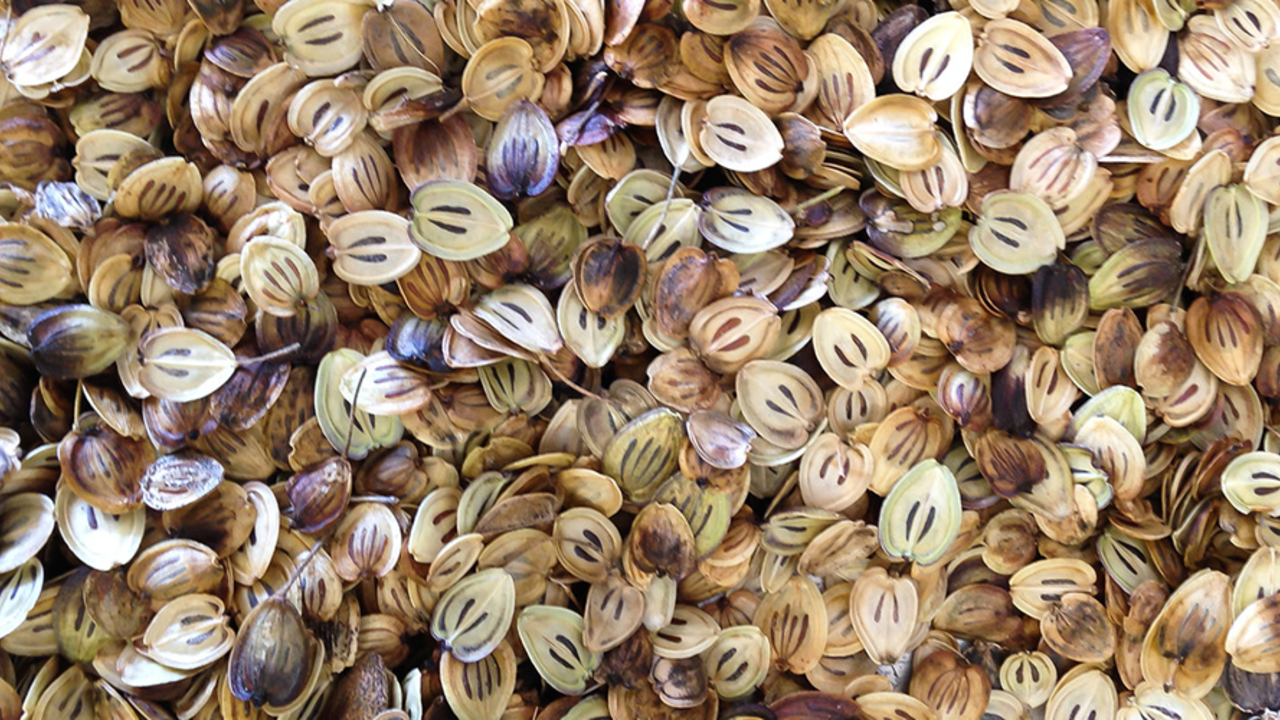How a Seed Gets on the Move

Parks Conservancy Nurseries
If you’ve been out in the Golden Gate National Parks walking your dog recently, you may have noticed that your furry friend was covered in burrs. Plants are relentless in spreading their future generations far and wide—even going so far as to hitch a ride on your pet. In the hours that it takes to brush your hiking companion’s fur back to silky perfection, perhaps you can take a moment to appreciate just how adept plants are at dispersing their seeds.
Seeds have adapted to travel in many more ways than just hitching a ride on furry animals. We all know that some seeds travel with the wind—just remember those childhood days of blowing fluffy dandelion seeds off their stalk. Our native California aster (Aster chilensis) and coyote bush (Baccharis pilularis) do the same.
Birds also play a part in seed dispersal. Birds like to eat berries that are cleverly filled with seeds, such as California blackberry (Rubus ursinus) and coffeeberry (Rhamnus californica), and carry them on the wing to new locations. Some seeds, like the mulberry (Morus alba, not a native), need the acidic grinding process that happens in a bird’s stomach to help them germinate.
Other seeds have adapted to be dispersed by water, which is called “hydrochory.” An extreme case of this phenomenon is the buoyant coconut. If one falls from a palm tree growing near the ocean, it can float and be carried as far as another continent!
In California’s dry climate, we might not expect to find many water-dispersed species; however, cow parsnip (Heracleum lanatum) has papery seeds that are specially shaped to utilize water as a means of dispersal. They are curved in a shape like a small shallow bowl, so they float like little boats when they fall into water and are carried away from the parent plant to sprout farther downstream.
Willows (Salix lasiolepis) grow in riparian areas and use both wind and water as means of seed dispersal. Willows wait to release their small and lightweight seeds, until the surge of rain-swollen streams has subsided and the carried sediment is less likely to bury them. In summer, the less forceful flow of water helps disperse and carry away the willow seeds.
As you are out enjoying the parks this summer, be sure to take a closer look and appreciate the many ways that plants have adapted to ecological conditions to disperse their seeds. Just remember that native and invasive seeds both want to travel, so be careful which seeds take a ride home with you on your jacket, to be deposited somewhere new!
By Julia Fields
Fort Funston and Oceana Nursery Intern